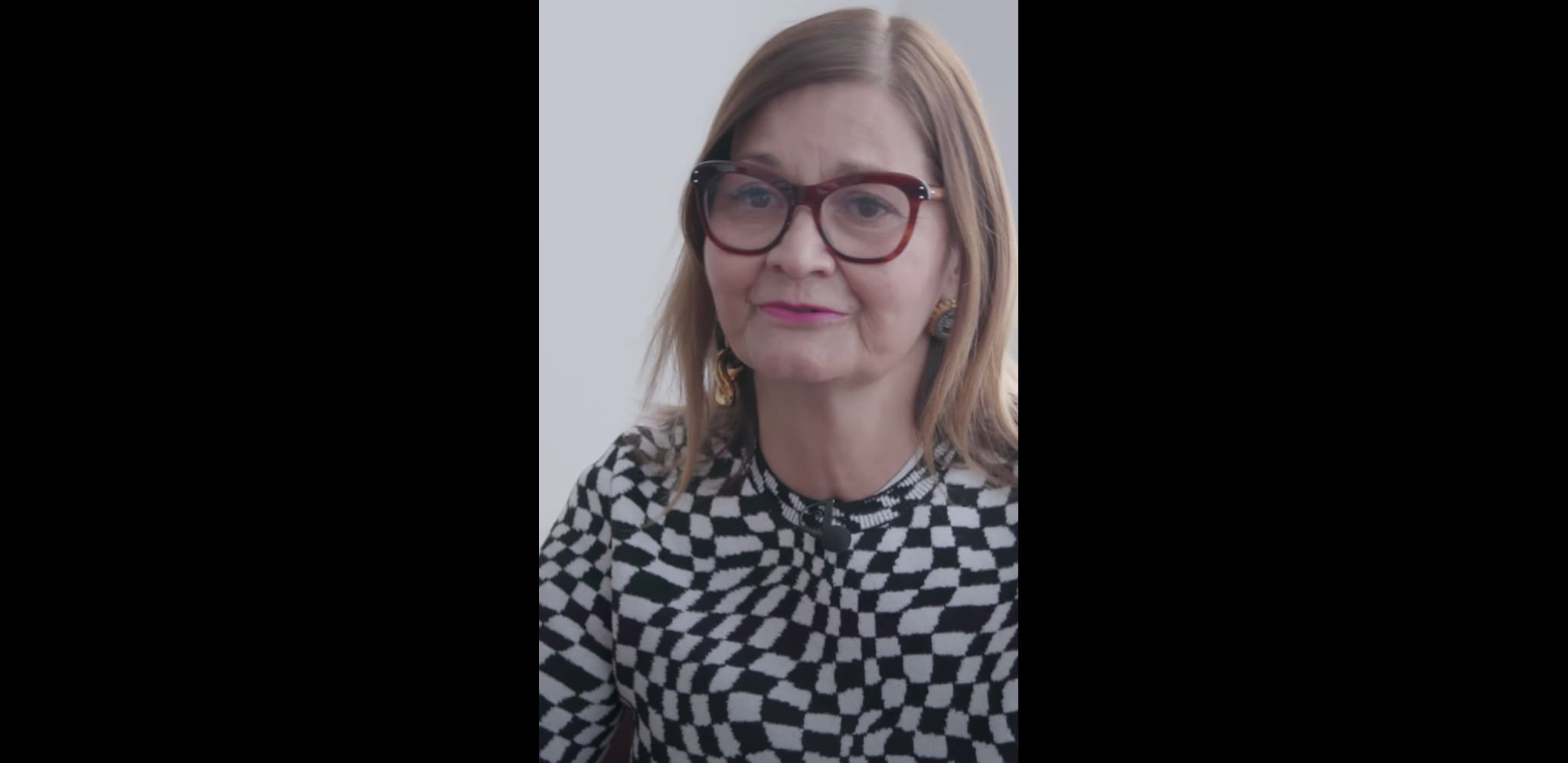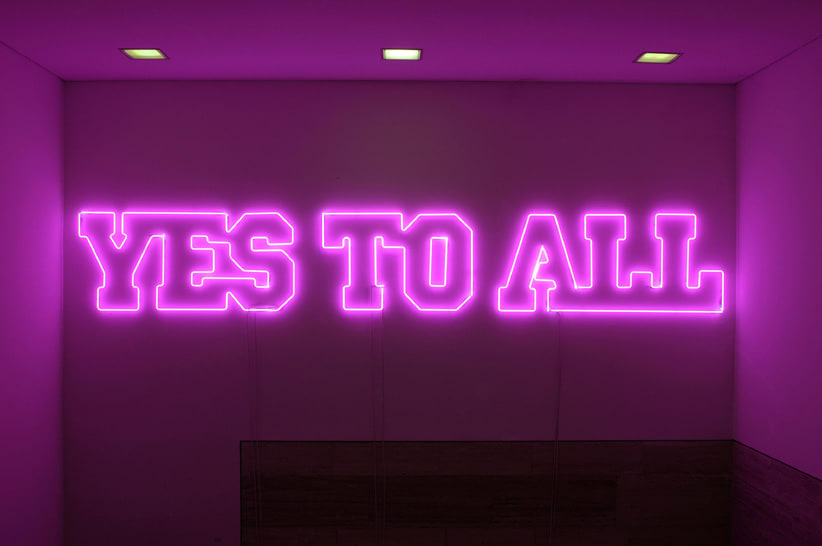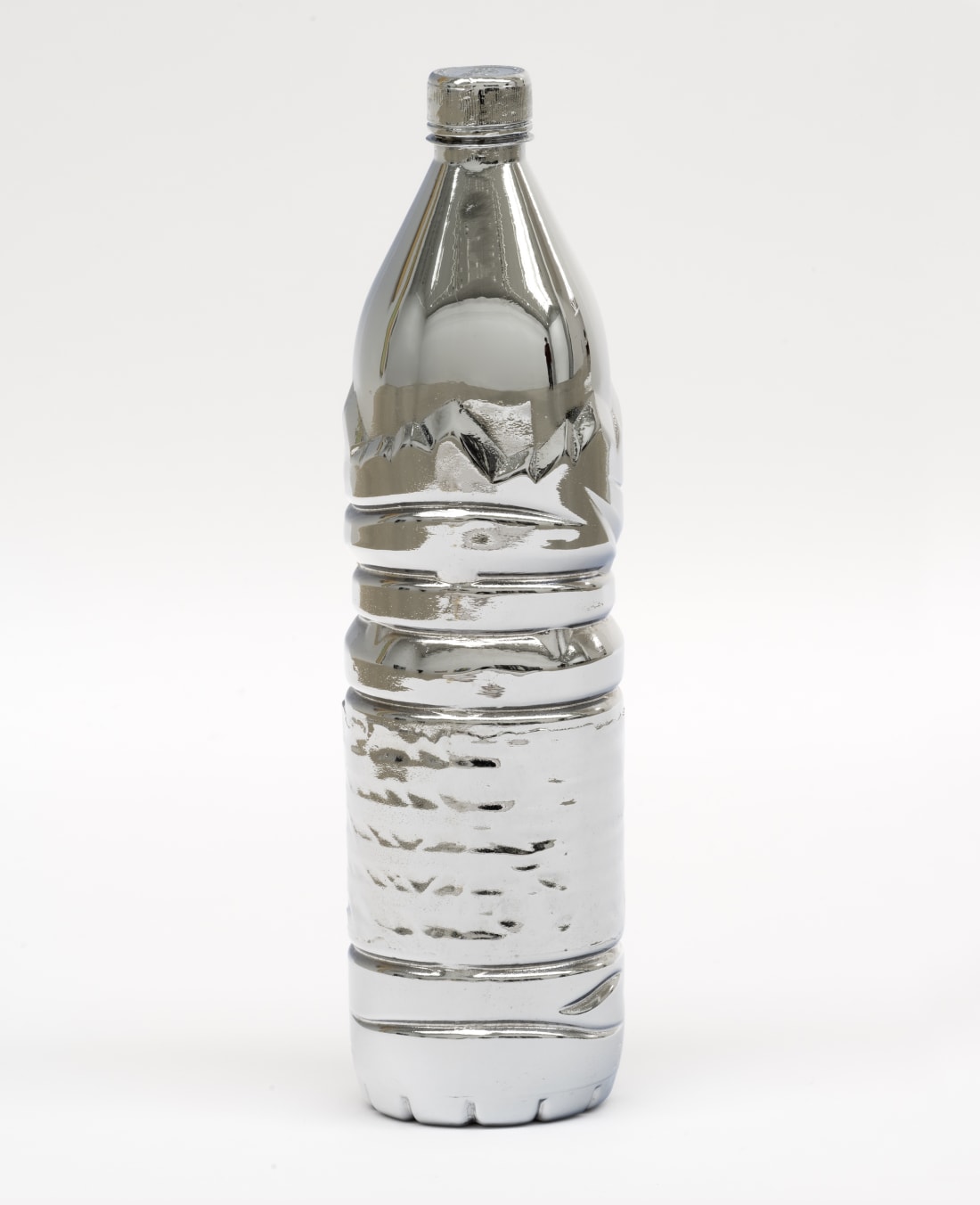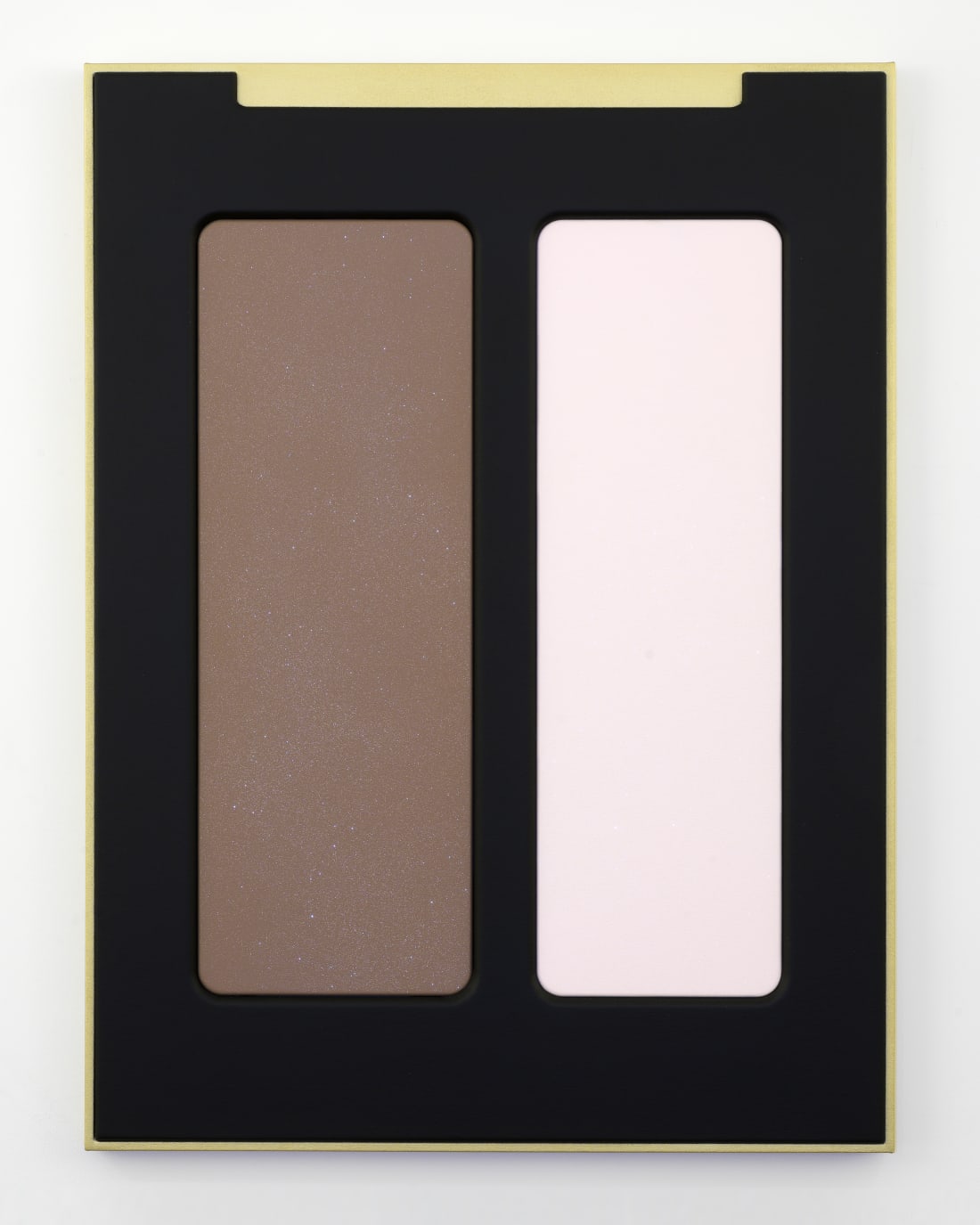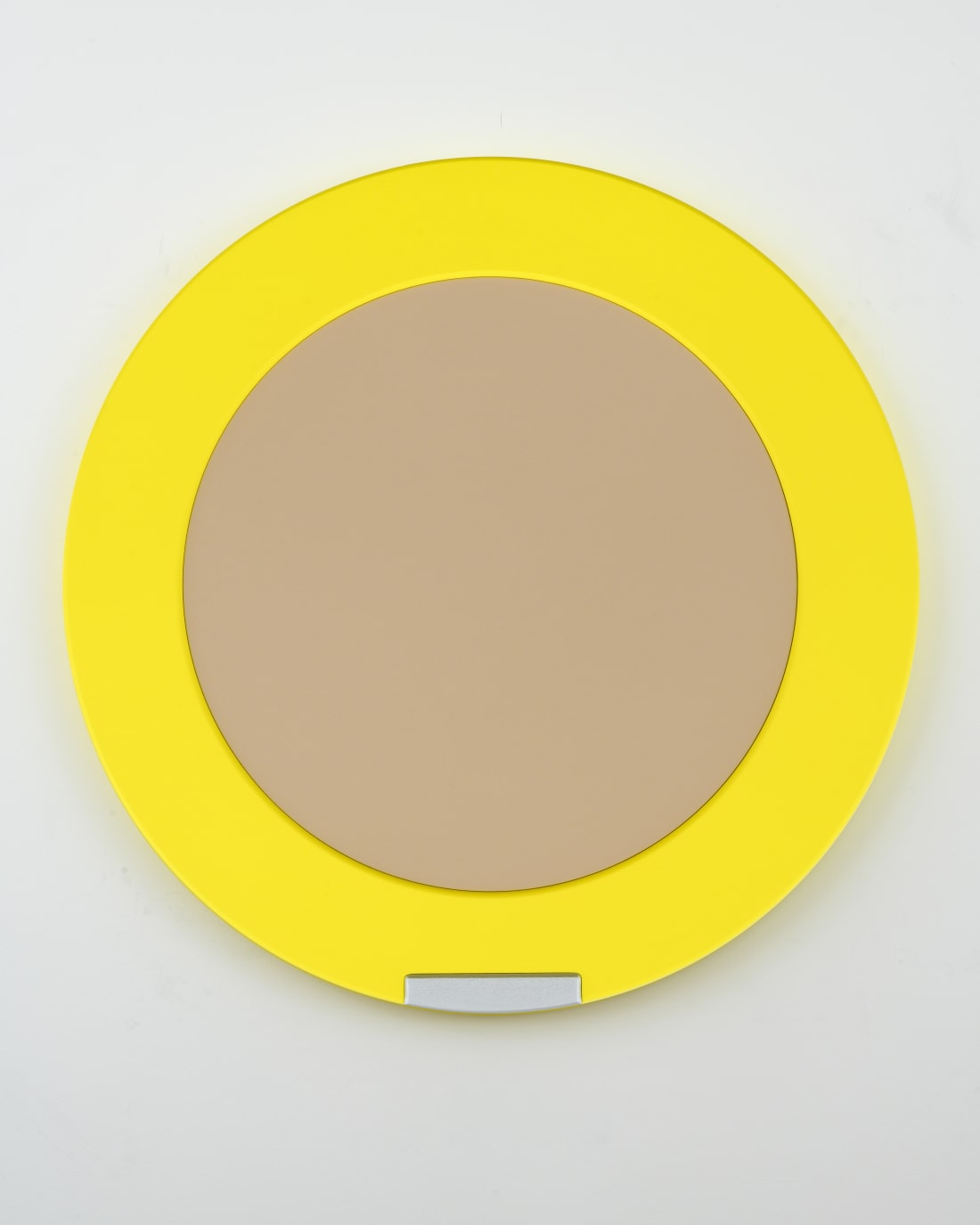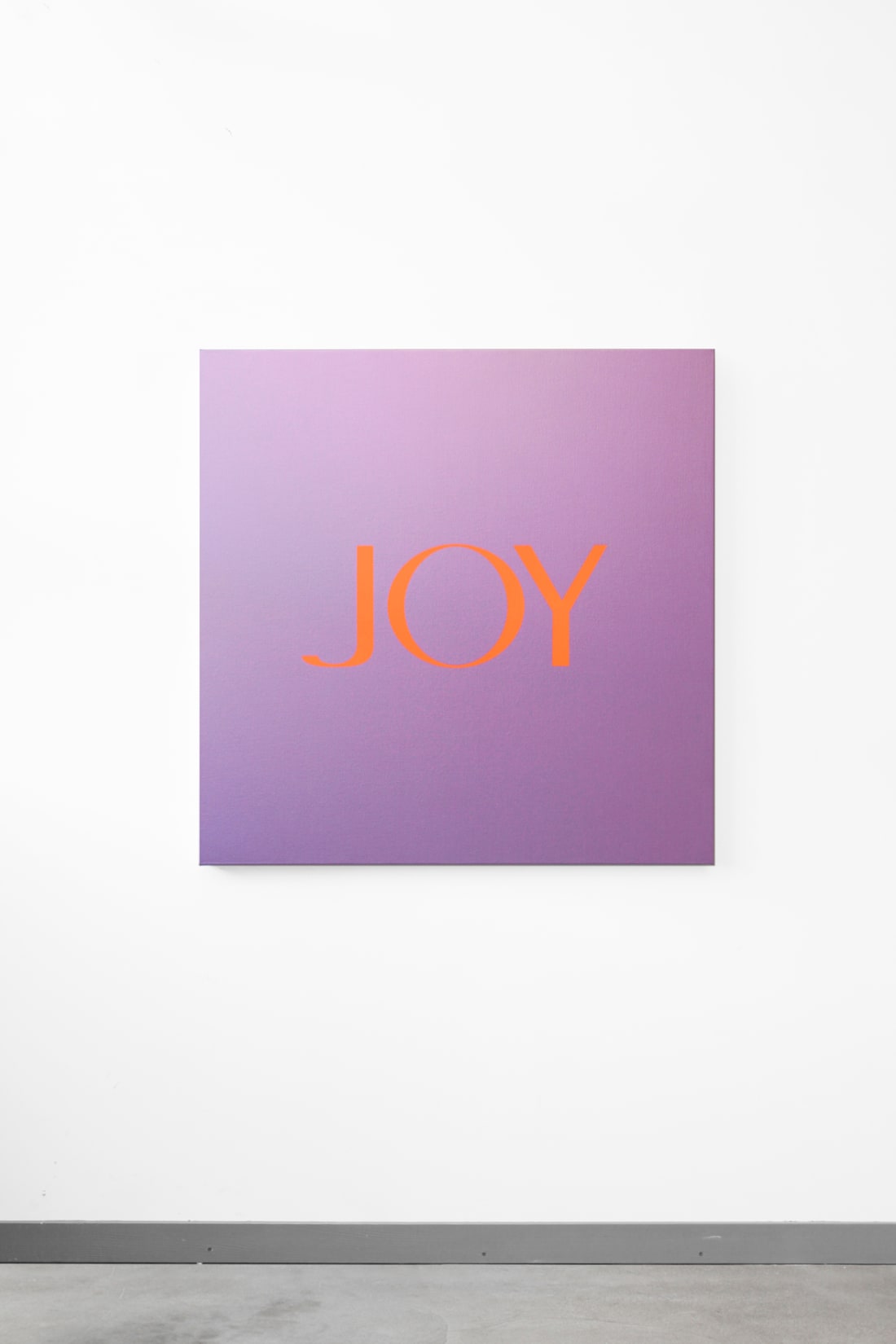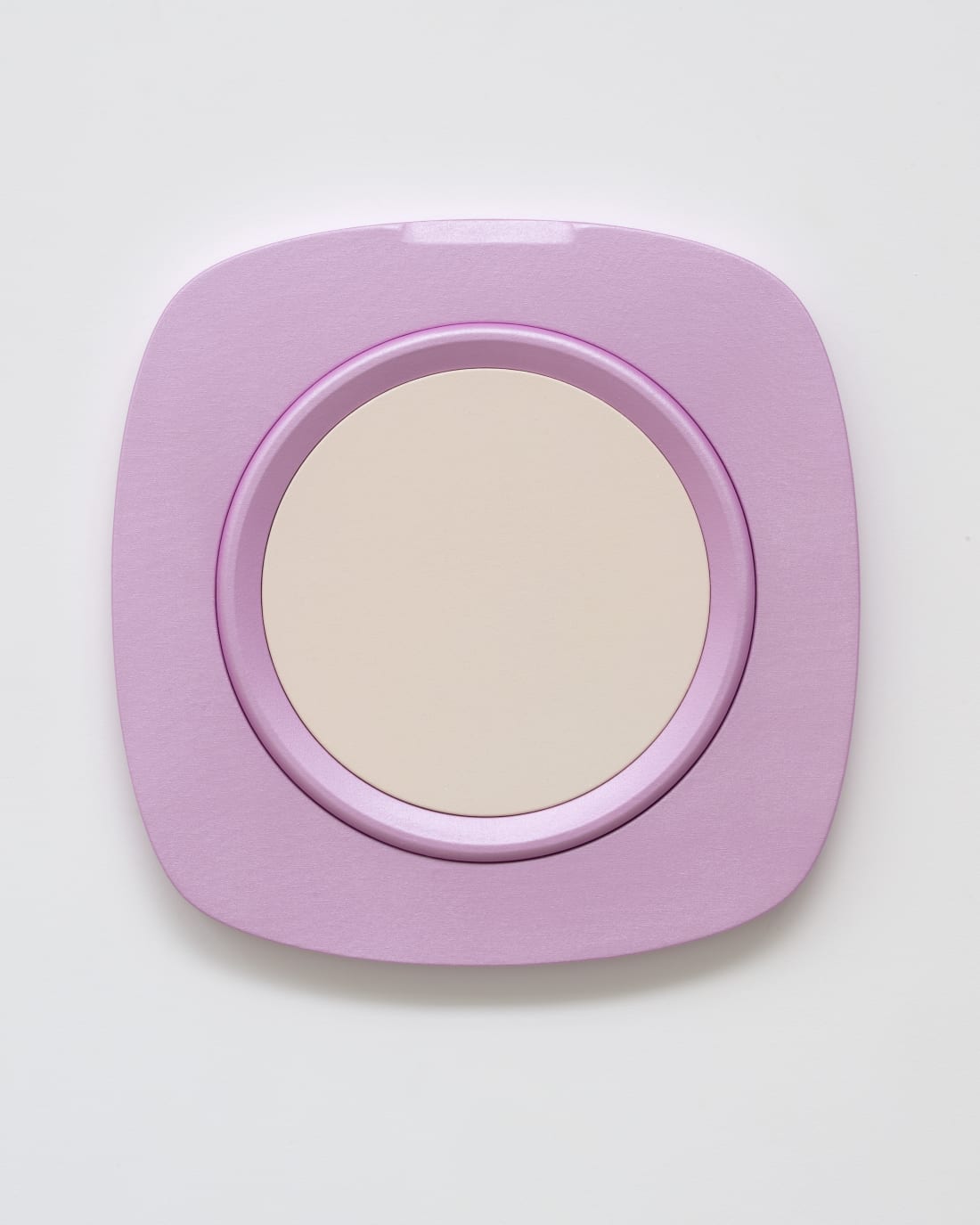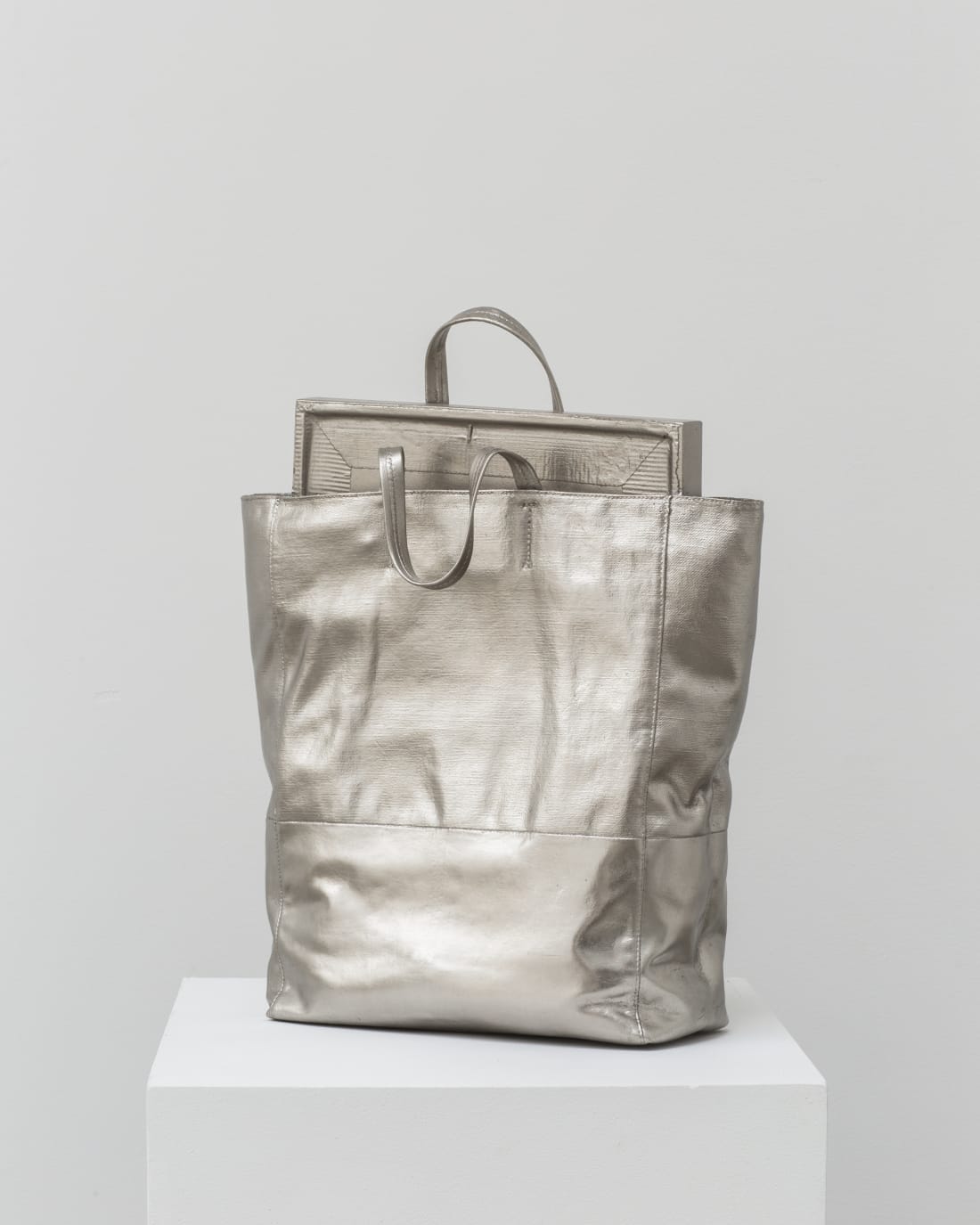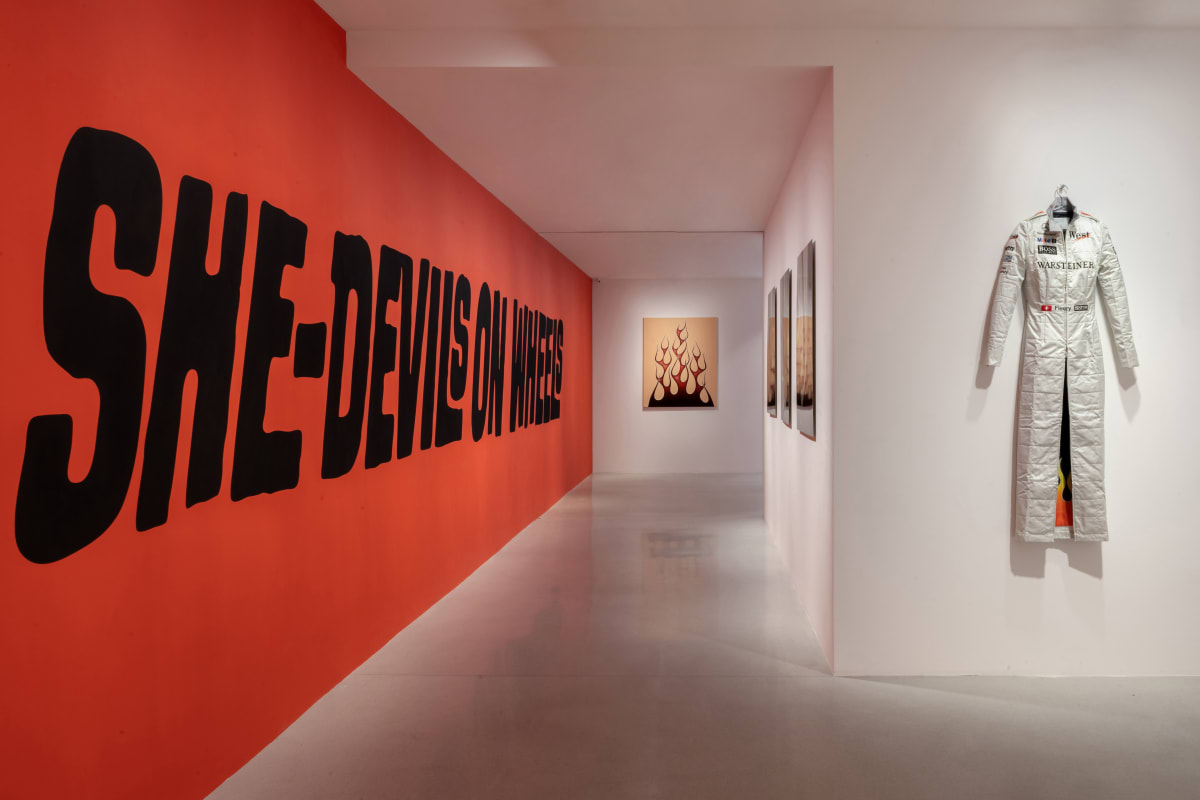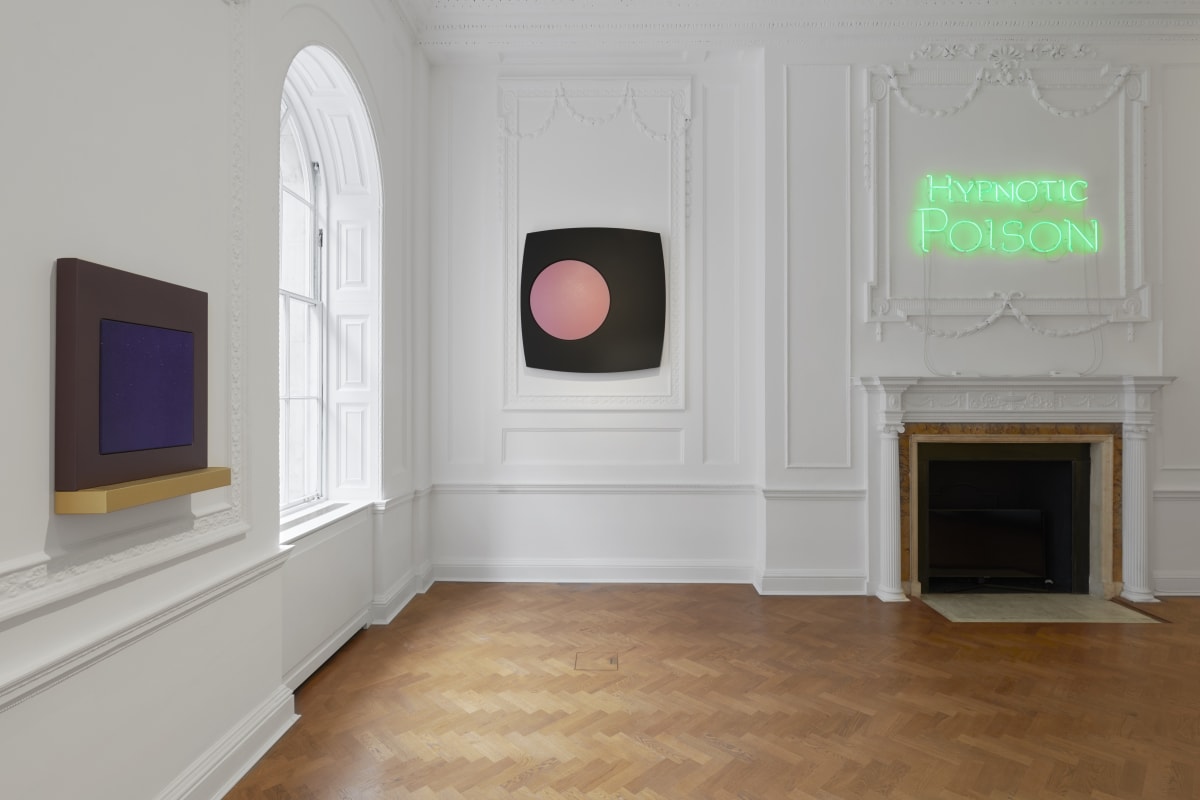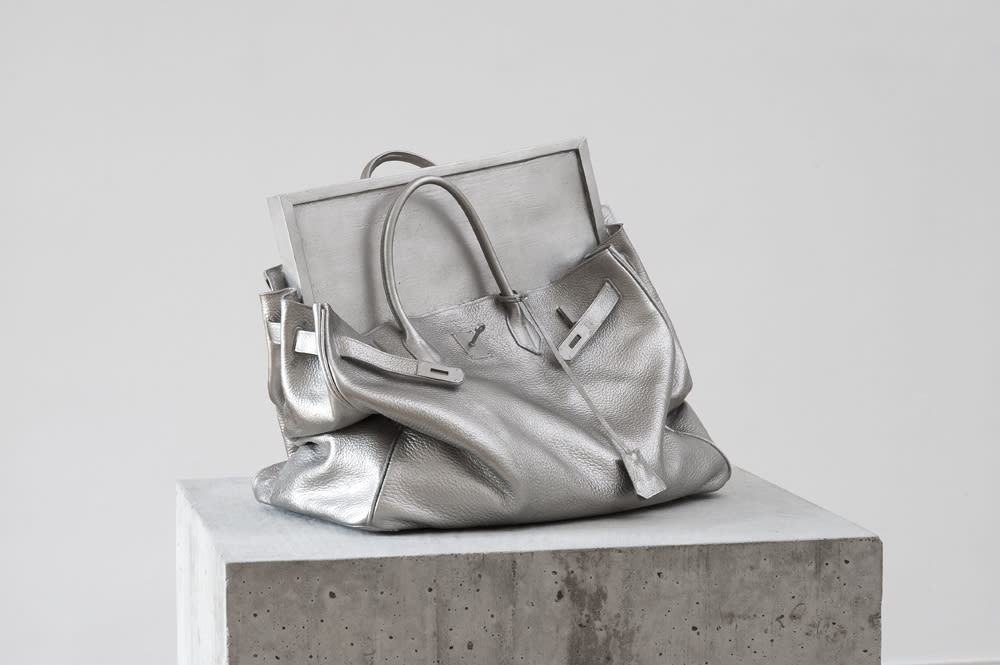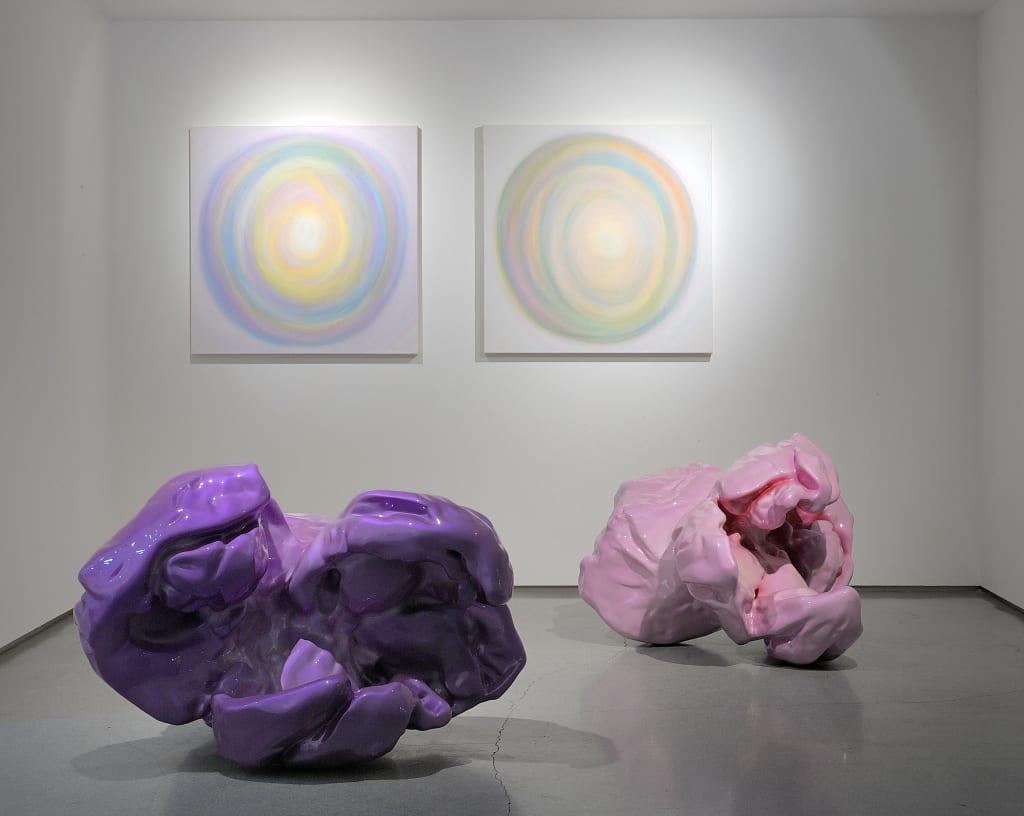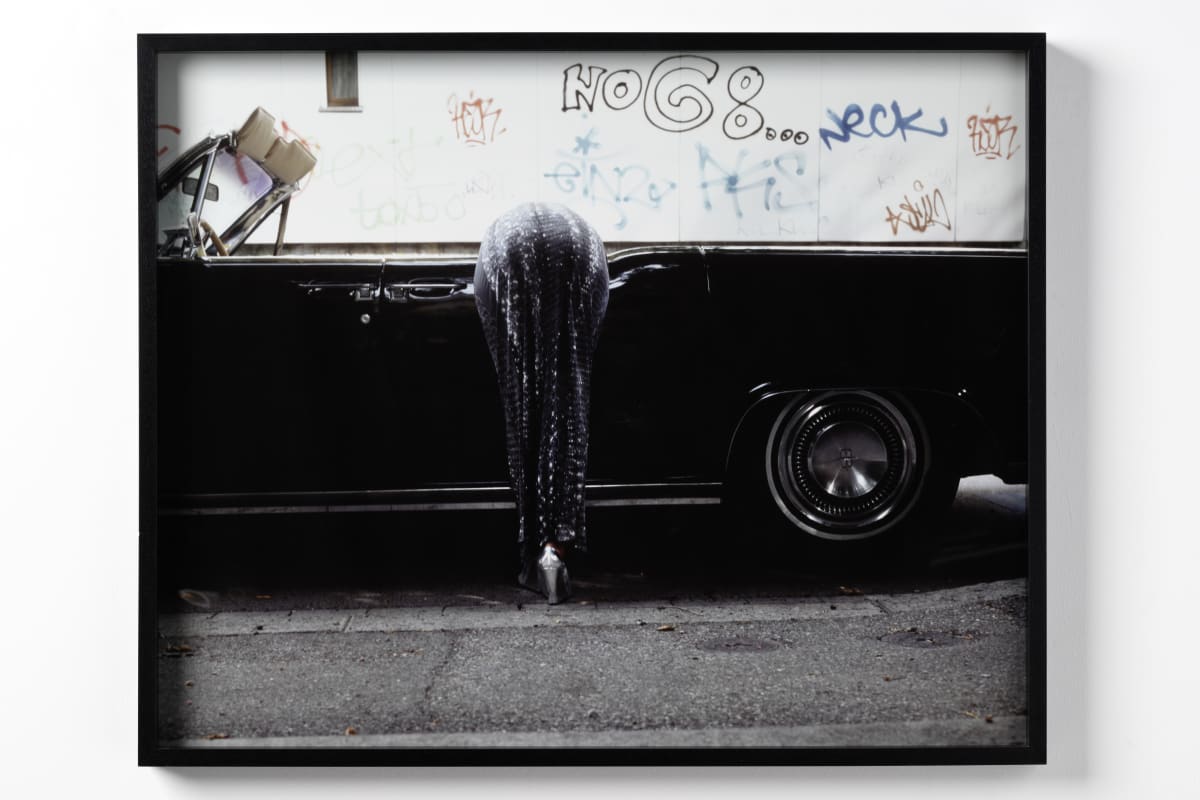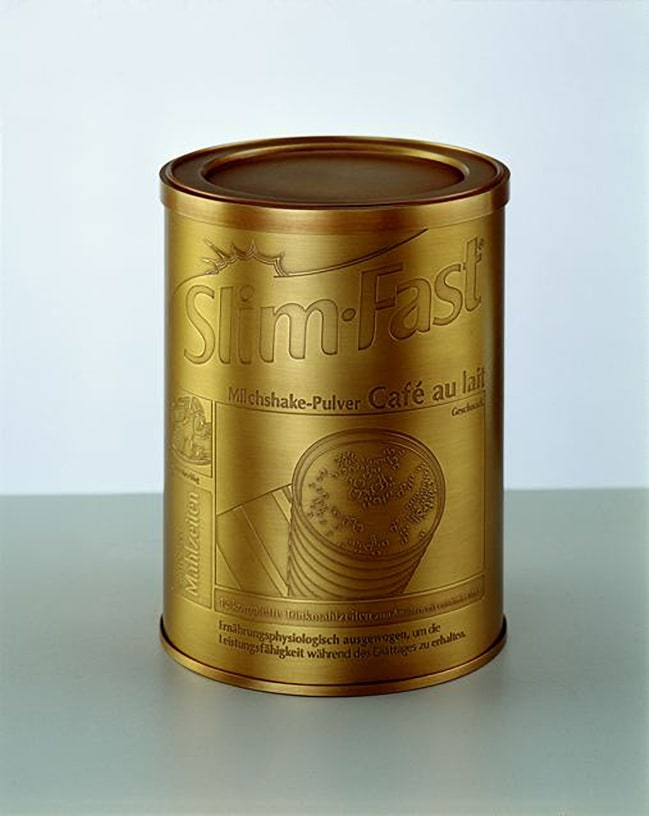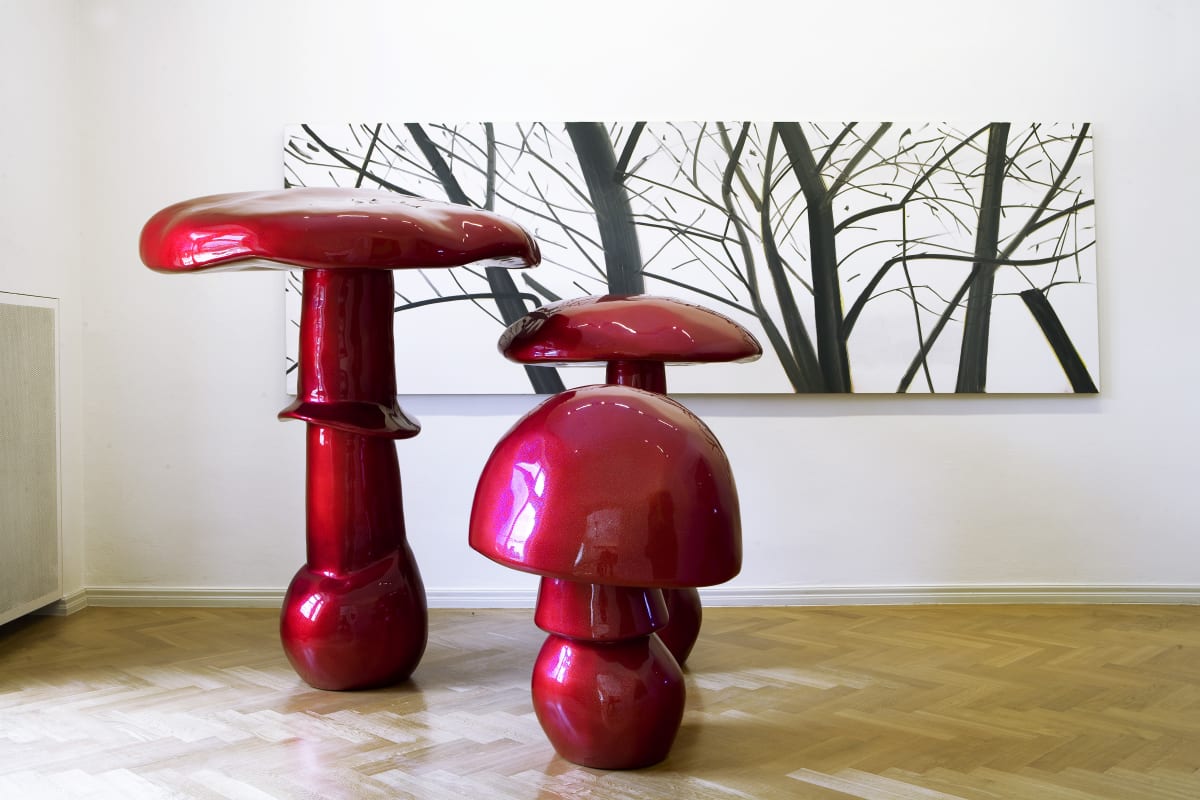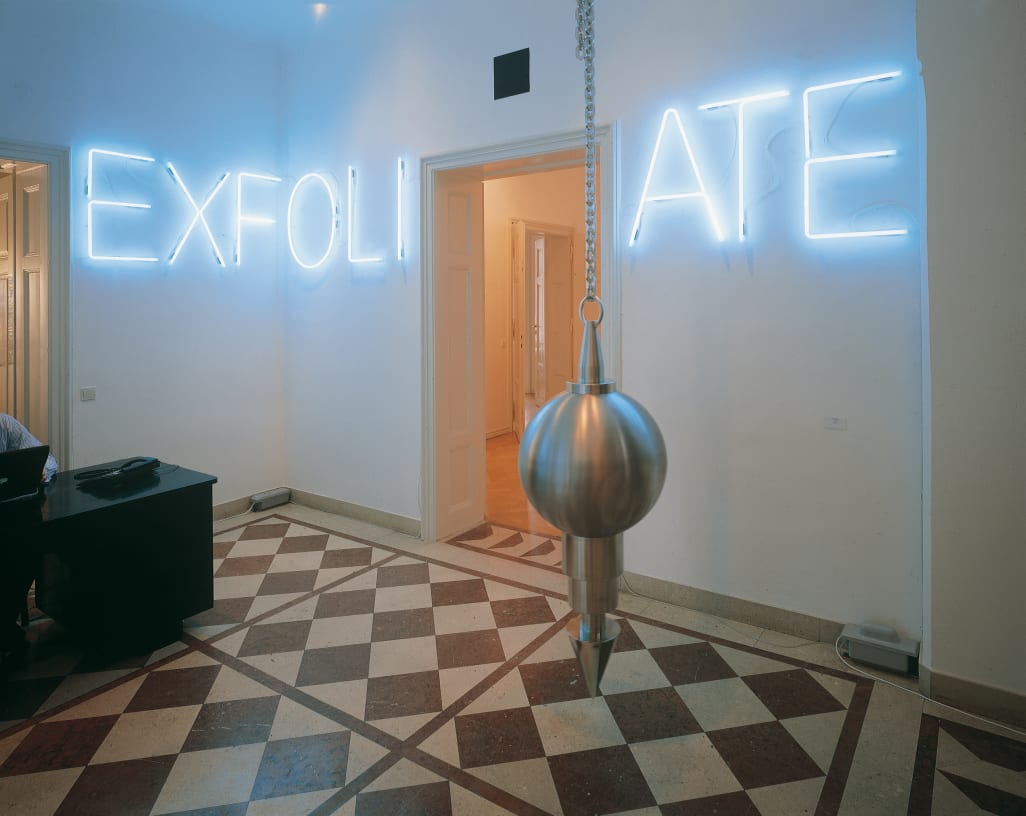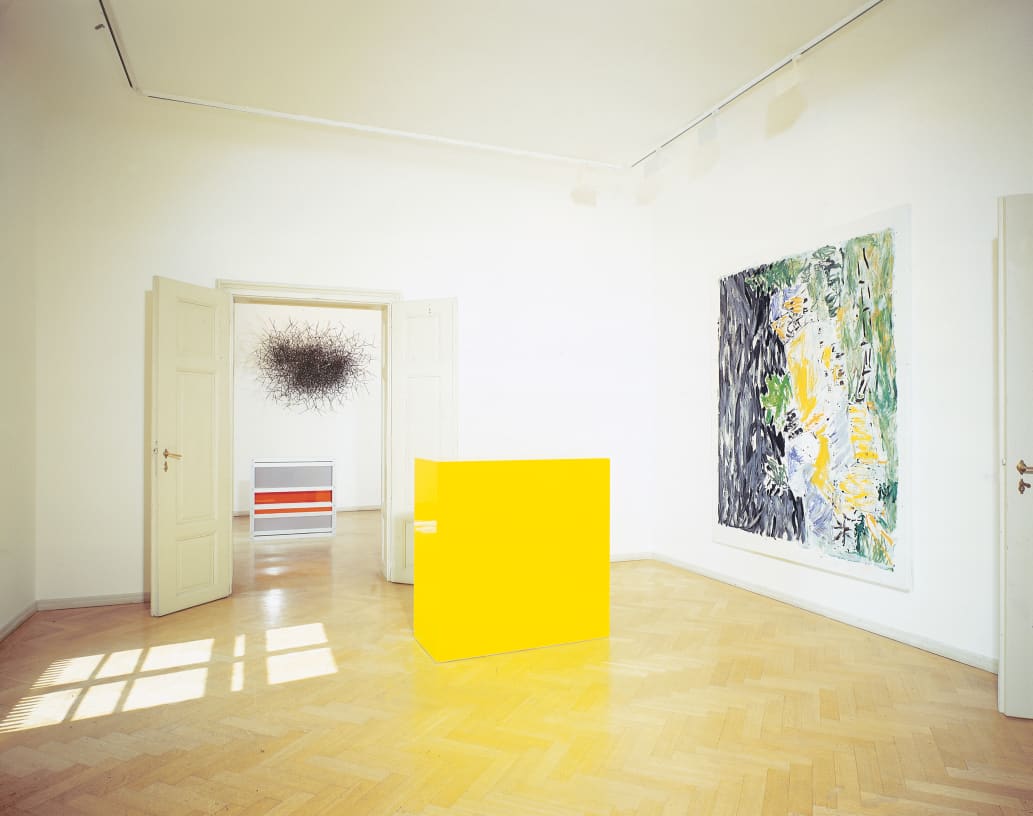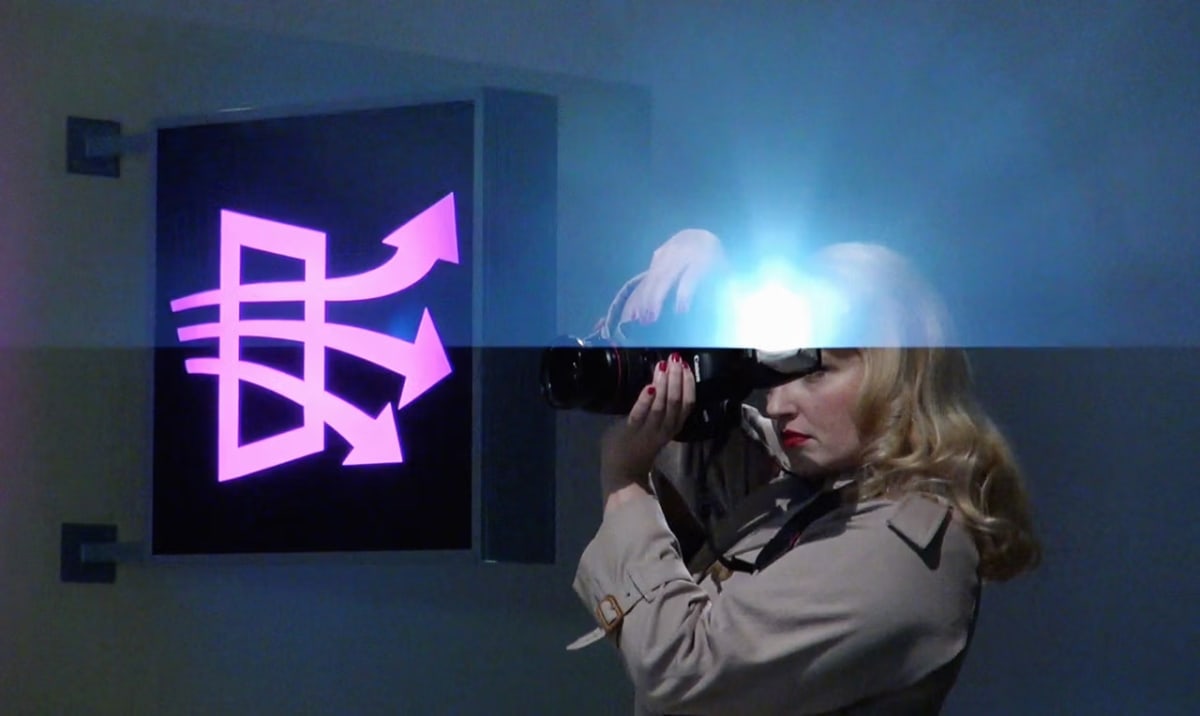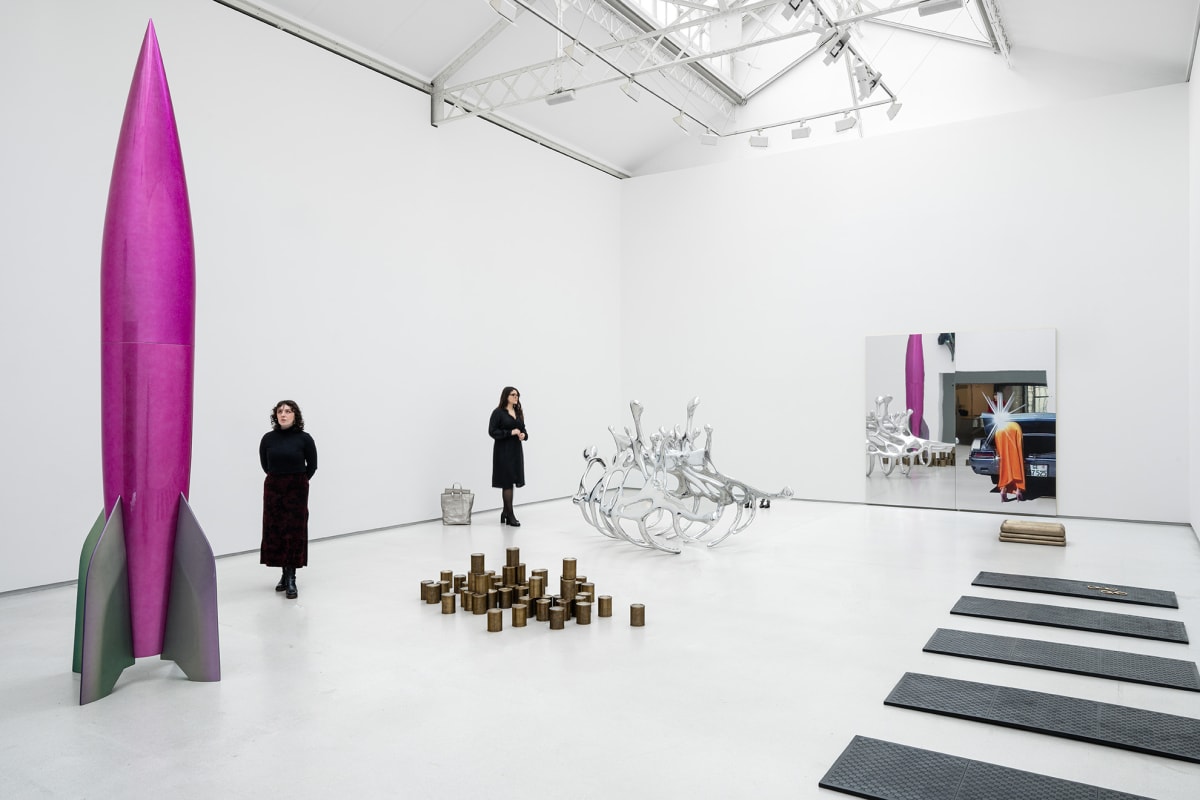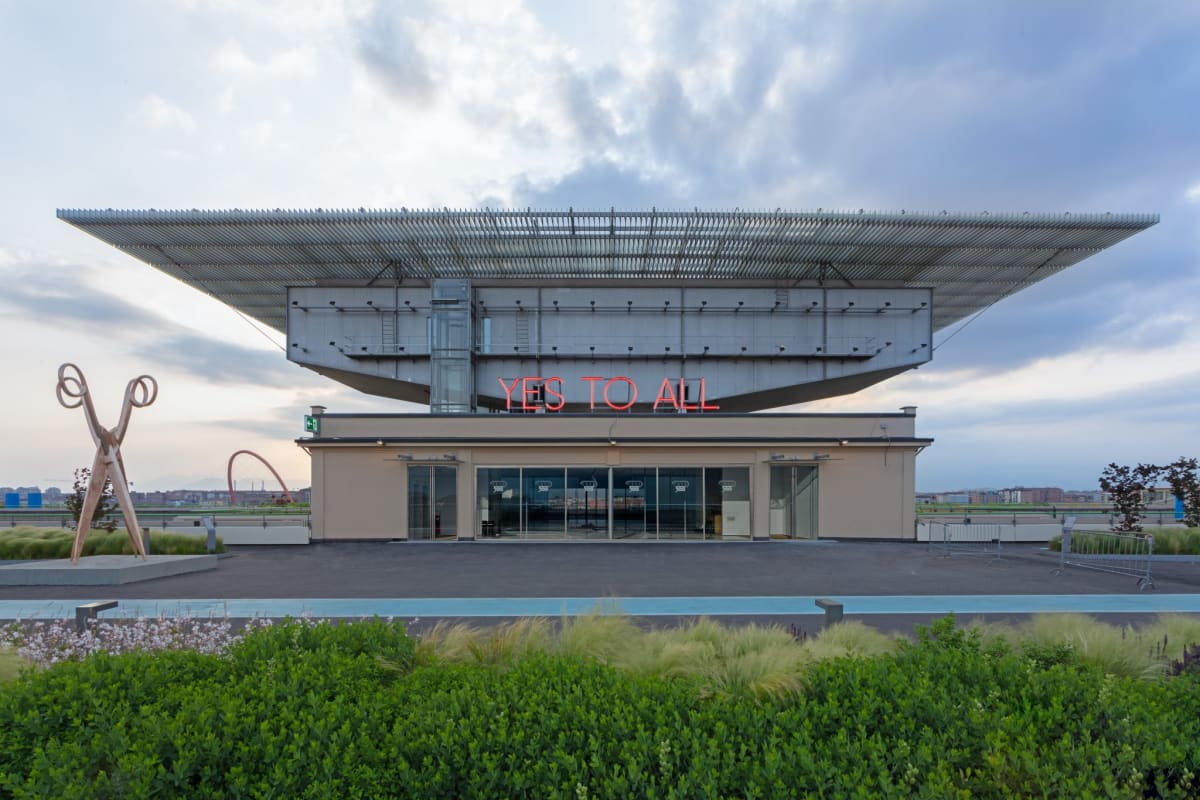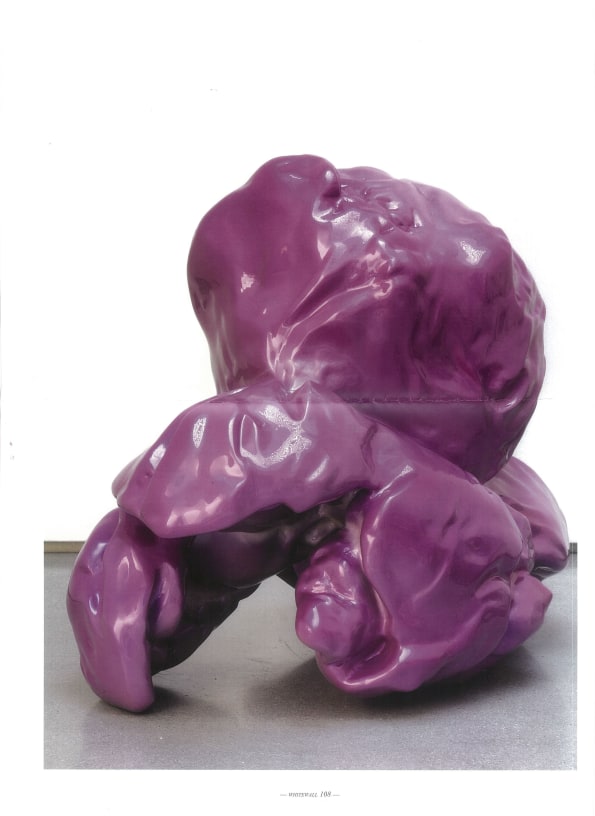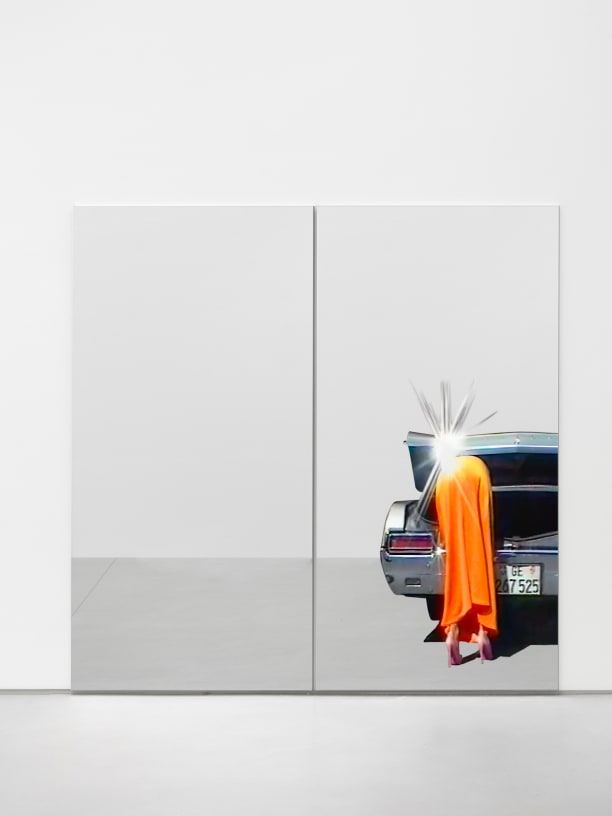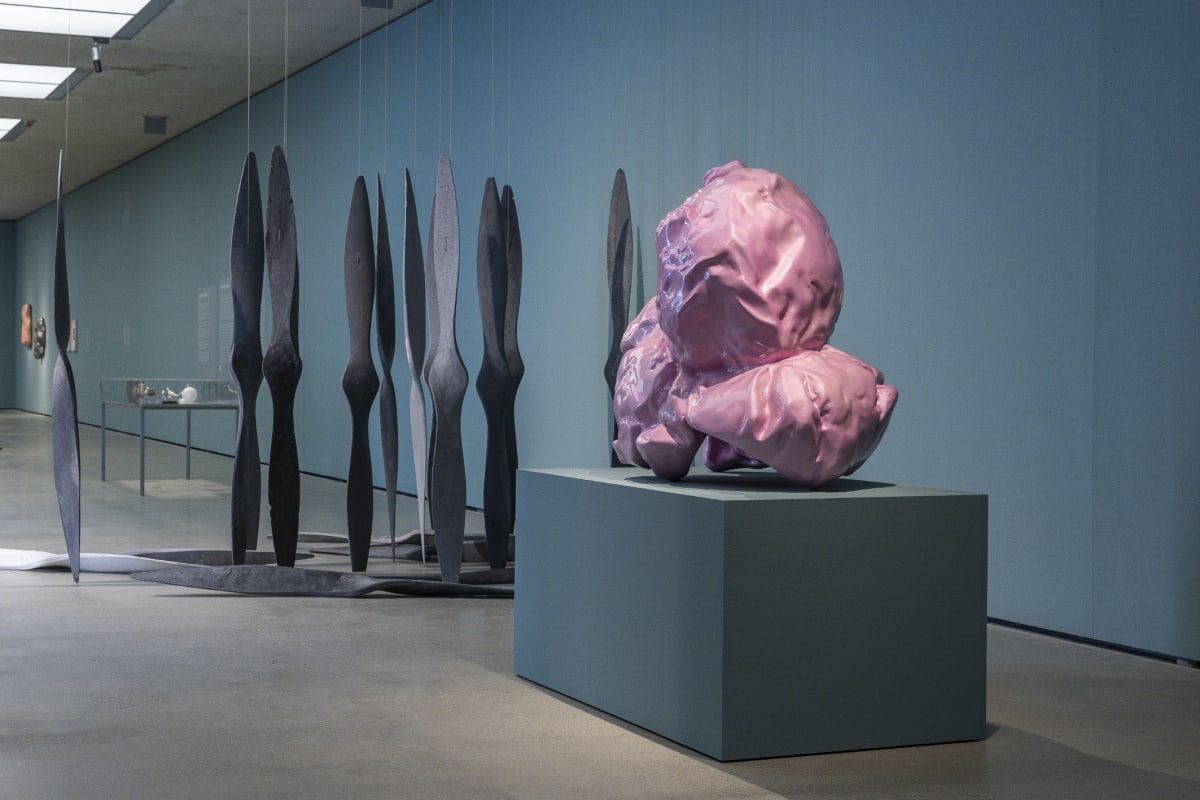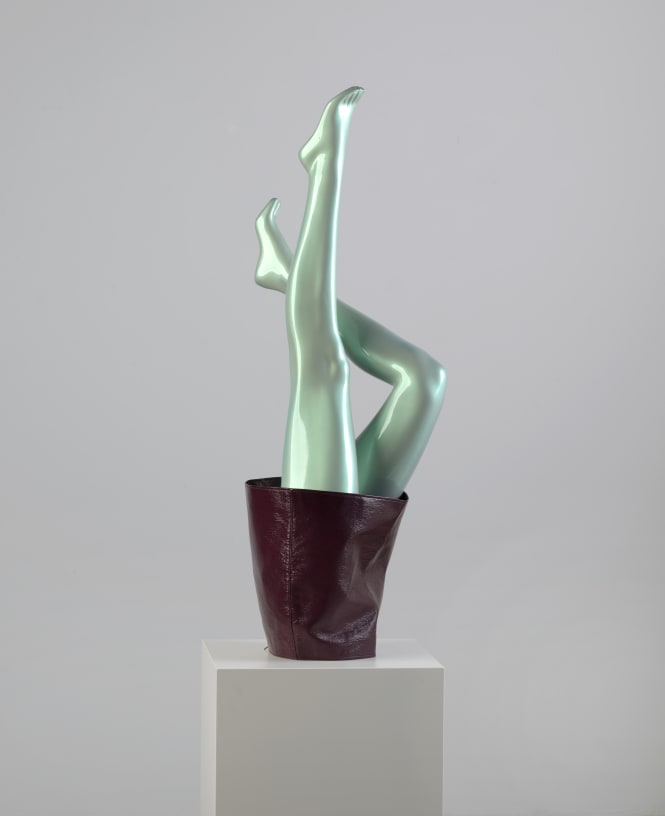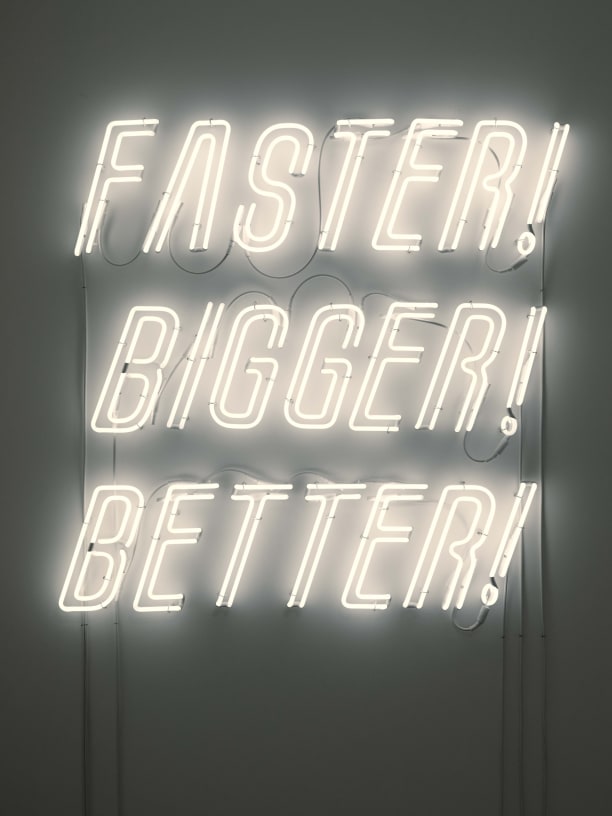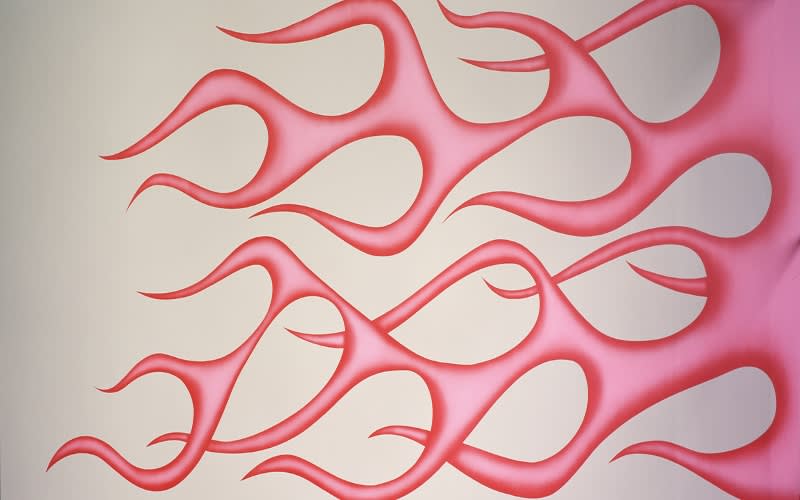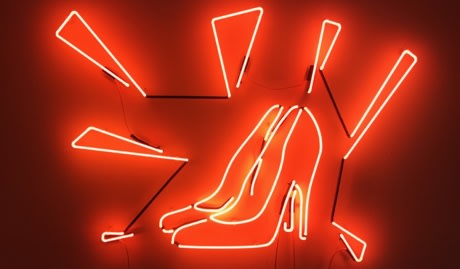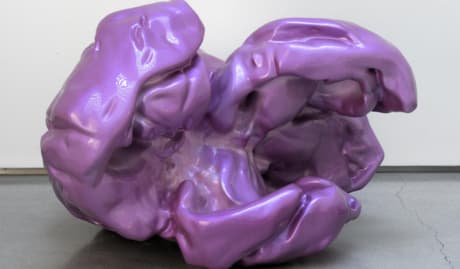
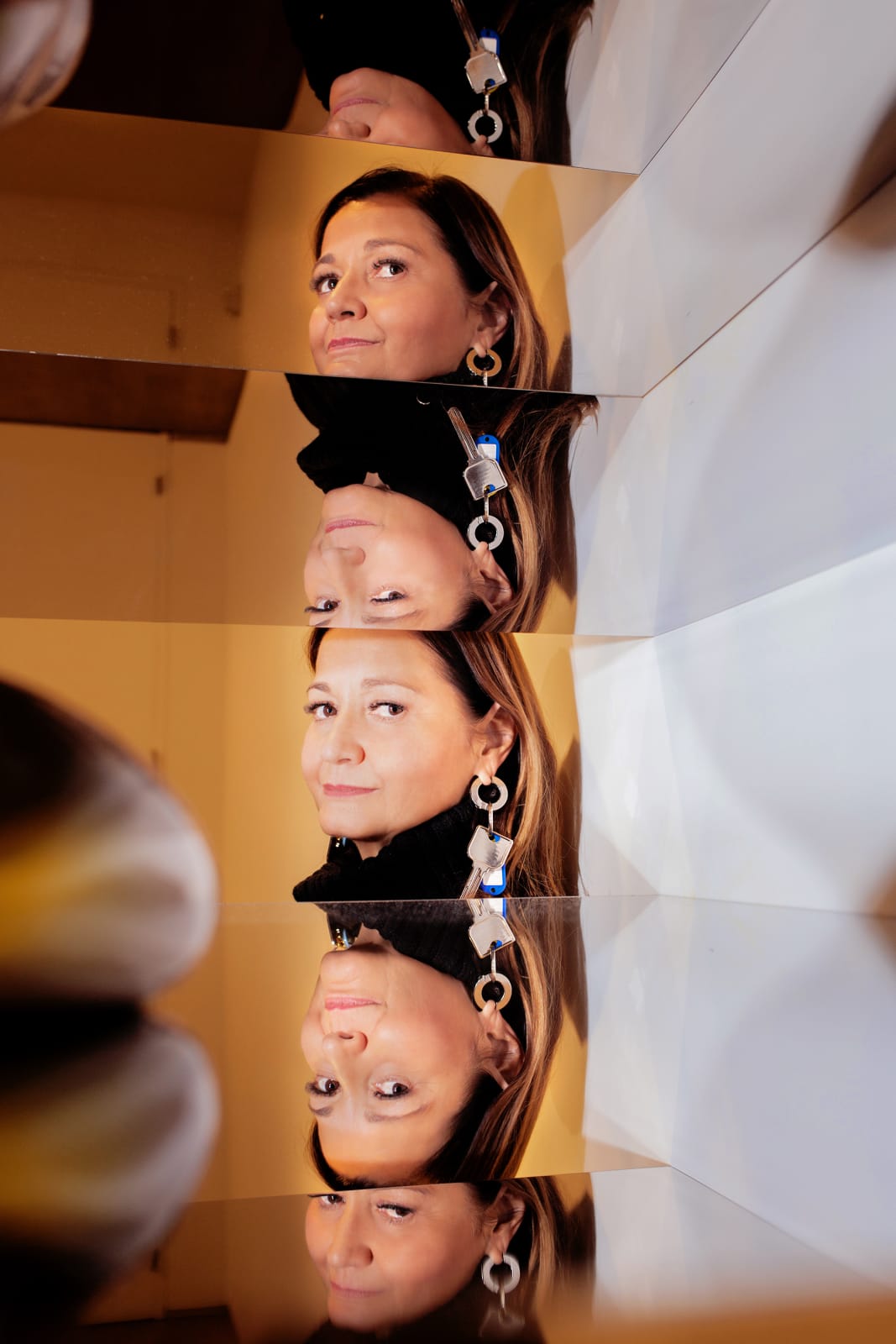
Sylvie Fleury
Overview
'I don't think of my work as appropriation. I see it more as customisation.'
Engaging with the mechanics of materialistic desire, aesthetics and the construction of value, Sylvie Fleury's sleek, alluring works provide a lens through which contemporary politics of gender, beauty and consumerism can be re-evaluated. Her artistic practice, which spans sculpture, performance, installation and painting, frequently employs materials and processes associated with early Conceptualism, Pop art and Minimalism. She is renowned for using readymade objects, such as cars, neons or makeup palettes, which are transformed by their inclusion in an art context, allowing viewers to see them in a new light. In doing so, she prompts questions about the fetishisation of luxury commodities and brands, as well as gendered patterns of consumption.
Fleury's diverse practice encompasses a variety of media and references, including luxury clothing, accessories and cosmetics, magazine covers, the world of Formula 1 racing, spaceships and icons of modern art. In her makeup palettes, she highlights the valorisation of surface appearance and female beauty, while the interplay of gender expectations in her rockets and cars subverts the supposed masculinity of these symbols. In her expansive artistic universe, nothing is off limits as a source of inspiration and inquiry. She critically reflects on broader concerns with temporality and permanence, and the fleeting nature of value in contemporary society, in which items and trends quickly become obsolete. Fleury holds up a mirror to systemic, internalised cultural values, prompting greater awareness of our own implicit biases.
Engaging with the mechanics of materialistic desire, aesthetics and the construction of value, Sylvie Fleury's sleek, alluring works provide a lens through which contemporary politics of gender, beauty and consumerism can be re-evaluated. Her artistic practice, which spans sculpture, performance, installation and painting, frequently employs materials and processes associated with early Conceptualism, Pop art and Minimalism. She is renowned for using readymade objects, such as cars, neons or makeup palettes, which are transformed by their inclusion in an art context, allowing viewers to see them in a new light. In doing so, she prompts questions about the fetishisation of luxury commodities and brands, as well as gendered patterns of consumption.
Fleury's diverse practice encompasses a variety of media and references, including luxury clothing, accessories and cosmetics, magazine covers, the world of Formula 1 racing, spaceships and icons of modern art. In her makeup palettes, she highlights the valorisation of surface appearance and female beauty, while the interplay of gender expectations in her rockets and cars subverts the supposed masculinity of these symbols. In her expansive artistic universe, nothing is off limits as a source of inspiration and inquiry. She critically reflects on broader concerns with temporality and permanence, and the fleeting nature of value in contemporary society, in which items and trends quickly become obsolete. Fleury holds up a mirror to systemic, internalised cultural values, prompting greater awareness of our own implicit biases.
The Swiss artist was born in 1961 in Geneva, where she lives and works. Since her first exhibition Shopping Bags in 1991, Fleury has had numerous solo and group exhibitions throughout Europe and the United States. Recent solo exhibitions include the Kunstraum Dornbirn, Austria (2019); Istituto Svizzero, Rome (2019); Villa Stuck, Munich (2016); Eternity Now, as part of the permanent collection at the Bass Museum, Miami (2017 and 2015); Centro de arte contemporaneo de Malága (2011); and MAMCO Genève (2008). Her work has also been presented in group shows internationally, including at the Daimler Contemporary, Berlin (2019); Leopold Museum, Vienna (2018); Kunsthaus Zürich (2018); Museum Haus Konstruktiv, Zürich (2016); SCHAUWERK Sindelfingen (2014); Kunstverein Hannover (2011); and Kunstverein Frankfurt (2011). In 2018 she was awarded Switzerland's Prix Meret Oppenheim and in 2015 received the Société des Arts de Genève Prize.
Videos
